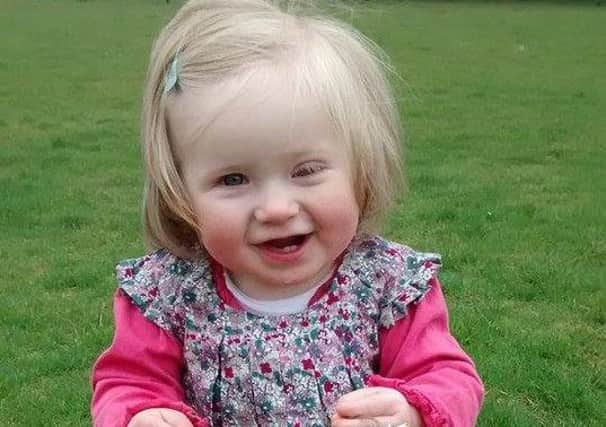A mobile phone can save a life


The Childhood Eye Cancer Trust (CHECT) has launched the poster campaign which parodies advertising by popular smart phone manufacturers and urges viewers to use their phones for more than gaming and social media.
CHECT’s ads encourage people to put their phones to better use, by helping detect and defeat a rare, deadly childhood eye cancer called Retinoblastoma (Rb). It is World Retinoblastoma Awareness Week from May 10-16.
Advertisement
Hide AdAdvertisement
Hide AdThe camera function on a phone, for example, can detect Retinoblastoma through flash photography. When a tumour grows inside a child’s eye, it can reflect back as a white pupil in flash photos, allowing for early detection of the eye cancer, which can save a child’s life.
CHECT’s campaign draws its inspiration from real-life cases such as that of one-year-old Arwen Somers, from Harmston, where Rb diagnosis was assisted by a smart phone. Arwen’s mother, Eloise, noticed a picture on her phone showed the affected eye with a white rather than a red reflex and used this to discover the symptom could mean a tumour. After visiting her GP and eye specialisists she was diagnosed at Birmingham Children’s Hospital.
Her mum said: “We first noticed a glow rather like that of a cat in a headlight in Arwen’s left eye when she was about four-months-old. A Google search of the symptom gave no information so I monitored it for a couple of weeks. Wanting to know what it was, I made a doctor’s appointment.
“At this stage the appointment was classed as non-urgent so we had to wait for two weeks to be seen. The night before the appointment I took a photograph of Arwen on my phone and noticed for the first time how the affected eye showed as a white rather than red reflex. Google was able to offer much more information and at this stage we discovered the symptom could mean a tumour. The following day the GP confirmed what we feared.”
Advertisement
Hide AdAdvertisement
Hide AdThey were eventually referred to a specialist who confirmed there was a growth in Arwen’s left eye and Birmingham Children’s Hospital gave the definitive diagnosis of Retinoblastoma, grade D+.
Arwen’s mum said: “At this stage we found ourselves making the heartbreaking decision to remove the affected eye. This was the Friday and the operation itself took place the following Monday. Since the operation Arwen has made a full recovery and is now a happy and contented nearly one-year-old. She has met all her current developmental milestones early and is turning into a funny, quirky and beautiful young girl of whom we are very proud.”
The campaign is also suggesting that viewers simply text ‘EYES91 £3’ to 70070 to donate £3 towards CHECT’s work that aims to defeat this disease for good.
Joy Felgate, the CHECT chief executive, said: “Our hope is that, years from now, Retinoblastoma ceases to exist, and no child ever has to experience the trauma of losing their eye, their sight, or their life. It’s this mission that drives our research into a cure for the disease – which really is within our grasp.
Advertisement
Hide AdAdvertisement
Hide Ad“Retinoblastoma is one of the most devastating illnesses children and families can face. Not only does the child have to endure aggressive bouts of chemo and radiotherapy, they also need to have their prosthetic eyes sized and fitted every six months as they grow – which, as you can imagine, is particularly traumatic for a toddler.”